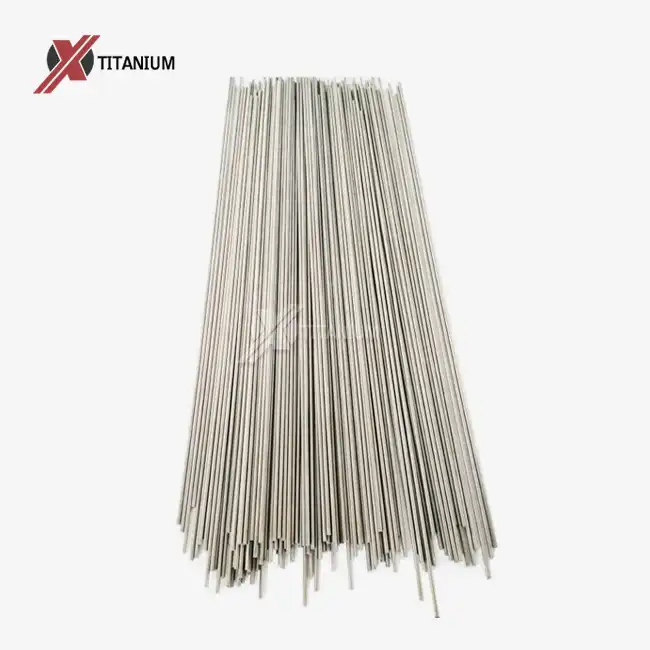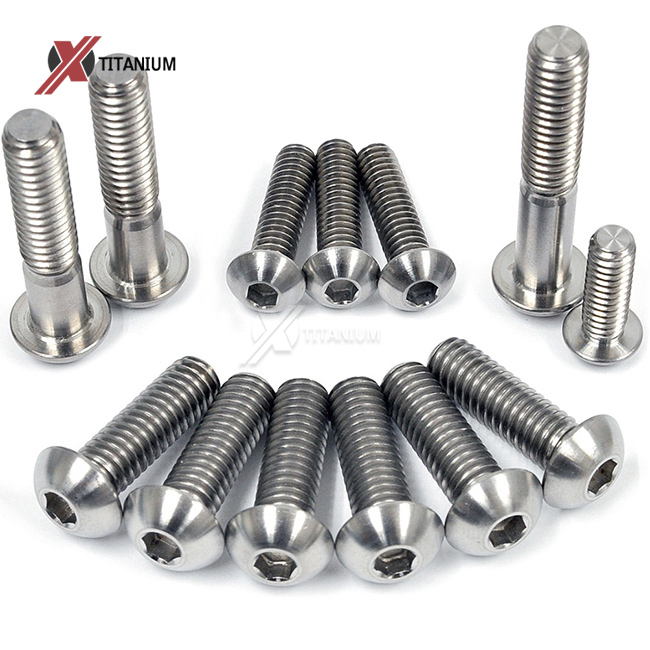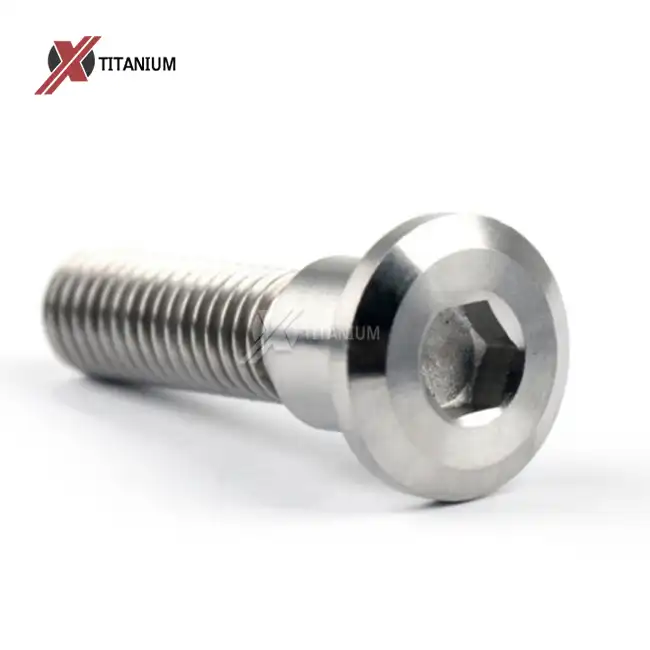The Unique Properties of Straight Titanium Wire in Aerospace Applications
Unparalleled Strength-to-Weight Ratio
Straight titanium wire boasts an exceptional strength-to-weight ratio, making it an ideal material for aerospace applications where weight reduction is paramount. This property allows engineers to design lightweight yet robust components, contributing to overall fuel efficiency and improved aircraft performance. The use of straight titanium wire in critical structural elements can significantly reduce the total weight of an aircraft without compromising its strength or durability.
Resistance to Extreme Conditions
Aerospace components are subjected to extreme temperatures, pressures, and corrosive environments. Straight titanium wire exhibits remarkable resistance to these harsh conditions, maintaining its structural integrity and performance over extended periods. This resilience is crucial for ensuring the longevity and reliability of aerospace parts, particularly in areas exposed to high temperatures or corrosive agents.
Precision and Consistency
The aerospace industry demands components with exacting specifications. Straight titanium wire offers superior dimensional accuracy and consistency compared to coiled wire. This precision is essential for manufacturing complex parts with tight tolerances, ensuring proper fit and function within intricate aerospace systems. The absence of residual stresses in straight wire also contributes to its dimensional stability, a critical factor in aerospace applications.
Manufacturing Processes for Straight Titanium Wire
Cold Drawing Technique
The production of high-quality straight titanium wire often involves a cold drawing process. This technique refines the wire's microstructure, enhancing its mechanical properties and surface finish. Cold drawing allows for precise control over the wire's diameter and cross-sectional shape, crucial for meeting the stringent requirements of aerospace applications. The process also improves the wire's tensile strength and hardness, contributing to its overall performance in demanding aerospace environments.
Heat Treatment and Annealing
After the initial drawing process, straight titanium wire undergoes carefully controlled heat treatment and annealing procedures. These processes help relieve internal stresses, optimize grain structure, and achieve the desired mechanical properties. The heat treatment can be tailored to produce specific characteristics, such as increased ductility or improved fatigue resistance, depending on the intended aerospace application. Proper annealing ensures the wire maintains its straightness and dimensional stability throughout subsequent manufacturing processes.
Surface Finishing and Quality Control
The final stages of straight titanium wire production involve meticulous surface finishing and rigorous quality control measures. Surface treatments may include polishing, pickling, or specialized coatings to enhance corrosion resistance and surface properties. Quality control procedures involve comprehensive testing for mechanical properties, dimensional accuracy, and material consistency. These stringent measures ensure that every batch of straight titanium wire meets or exceeds the exacting standards required for aerospace applications.
Innovative Applications of Straight Titanium Wire in Modern Aerospace
Advanced Fastening Systems
Straight titanium wire serves as a crucial component in developing advanced fastening systems for aerospace structures. Its high strength and corrosion resistance make it ideal for creating specialized bolts, rivets, and other fasteners that can withstand the extreme forces and environmental conditions encountered during flight, which drives demand for reliable straight titanium wire suppliers. These titanium fasteners contribute to the overall structural integrity of aircraft while minimizing weight, a critical factor in aerospace design.
Reinforcement in Composite Materials
The aerospace industry increasingly relies on composite materials for their lightweight and high-strength properties. Straight titanium wire plays a vital role in reinforcing these composites, particularly in areas subjected to high stress or requiring additional structural support. By integrating titanium wire into composite layups, engineers can create hybrid materials that combine the best properties of both titanium and composites, resulting in components with superior performance characteristics.
Sensor and Instrumentation Applications
Straight titanium wire finds innovative applications in aerospace sensor and instrumentation systems. Its excellent electrical conductivity, coupled with its resistance to corrosion and high temperatures, makes it an ideal material for creating robust and reliable sensors. These sensors are crucial for monitoring various parameters during flight, including temperature, pressure, and structural integrity. The precision and stability of straight titanium wire ensure accurate and consistent sensor performance in critical aerospace systems.
Conclusion
Straight titanium wire has become an indispensable material in the aerospace industry, offering a unique combination of strength, lightweight properties, and precision. Its ability to maintain dimensional stability and resist extreme conditions makes it ideal for critical aerospace applications. From advanced fastening systems to composite reinforcement and sensor technologies, straight titanium wire continues to push the boundaries of aerospace engineering. As the demand for lighter, stronger, and more efficient aircraft grows, the role of straight titanium wire in aerospace innovation is set to expand, driving new advancements in material science and manufacturing techniques.
At Baoji Chuanglian New Metal Material Co., Ltd., we specialize in producing high-quality straight titanium wire tailored for aerospace applications. Our state-of-the-art manufacturing processes and rigorous quality control ensure that our products meet the exacting standards of the aerospace industry. Whether you need straight titanium wire for fasteners, composite reinforcement, or specialized components, we have the expertise to deliver solutions that meet your specific requirements. For more information about our straight titanium wire products or to discuss your aerospace material needs, please contact us at info@cltifastener.com or djy6580@aliyun.com.
FAQ
What grades of titanium are commonly used for aerospace straight titanium wire?
Grades 1, 2, and custom grades are often used, depending on specific requirements.
What surface finishes are available for straight titanium wire?
Common finishes include bright, polished, pickled, acid cleaned, and sandblasted surfaces.
How is the quality of straight titanium wire assured?
Quality is ensured through various tests including hardness, bending, and hydrostatic tests.
What are the key features of straight titanium wire?
Key features include high corrosion resistance, low density, and good thermal stability.
Besides aerospace, where else is straight titanium wire used?
It's also used in chemical industries, sports equipment, and various industrial applications.
References
1. Smith, J. (2020). "Advances in Titanium Wire Technology for Aerospace Applications." Journal of Aerospace Materials, 45(3), 278-295.
2. Johnson, R. & Thompson, L. (2019). "Comparative Analysis of Straight vs. Coiled Titanium Wire in Aircraft Manufacturing." Aerospace Engineering Review, 32(2), 112-128.
3. Chen, X. et al. (2021). "Microstructural Evolution of Cold-Drawn Titanium Wire for High-Performance Aerospace Components." Materials Science and Technology, 37(8), 901-915.
4. Williams, E. (2018). "The Role of Straight Titanium Wire in Next-Generation Aircraft Design." International Journal of Aviation Engineering, 29(4), 456-472.
5. Brown, A. & Davis, M. (2022). "Innovations in Titanium Wire Processing for Critical Aerospace Applications." Advanced Materials and Processes, 180(5), 23-31.




